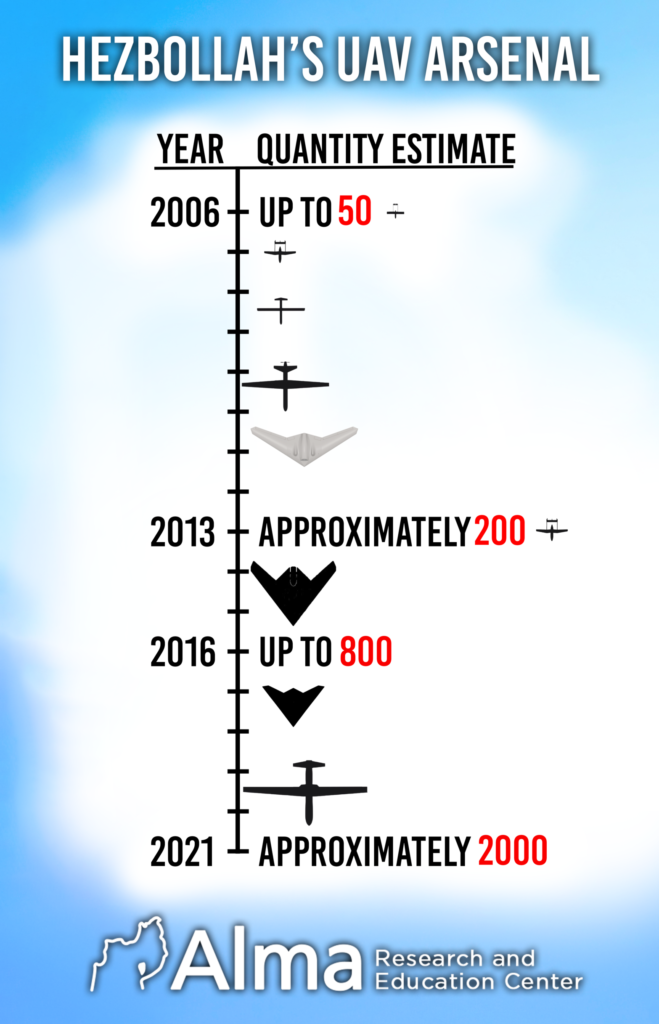In the special report we published on December 21, we stated that we estimate that today Hezbollah has approximately 2,000 Unmanned Arial Vehicles (UAVs). Over the past 15 years, there has been a huge increase in the number of Hezbollah’s UAVs. While in 2006 Hezbollah had only a few dozen UAVs (in our estimation less than 50), we have information that in 2013 they had a few hundred (about 200 UAVs) and in 2016 they had hundreds of UAVs (we estimate up to about 800). We estimate that they now have at least 2,000 UAVs.
The reasons for the immense increase in the number of Hezbollah’s UAVs to date can be divided into two main periods:
2006 until 2013:
- Iran and Hezbollah conclusions from the Second Lebanon War (2006).
- Hezbollah realizes UAVs’ capability and potential as intelligence and offensive tools and compensates for the lack of other powers (lack of an Air Force and difficulties in missile accuracy).
Hezbollah has a fleet of 200 Iranian-made UAVs (ynetnews 2013)
2013 until 2021
- An operational necessity for the fighting in Syria.
- Opening of the ground corridor from Tehran to Beirut to transfer equipment and weapons.
- Strengthening Hezbollah’s independent development, procurement, and production capabilities on Lebanese soil.
Hezbollah has hundreds of UAVs (Haaretz 2016)
Iran’s “UAV Army” is no longer a tactical threat. Although Iran’s “UAV Army” doesn’t pose an existential threat to the State of Israel, it certainly poses a strategic threat. There are many examples of this. for example, A “swarm” of Hezbollah UAVs extensively attacking Israel’s air defense systems in the north could neutralize Israel’s defenses or severely damage them. Another example could be a UAV attack on Haifa port, shutting it down de facto.
The quantity, quality, and ability to operate the UAVs on a large scale make the “UAV Army” a strategic threat to Israel.






